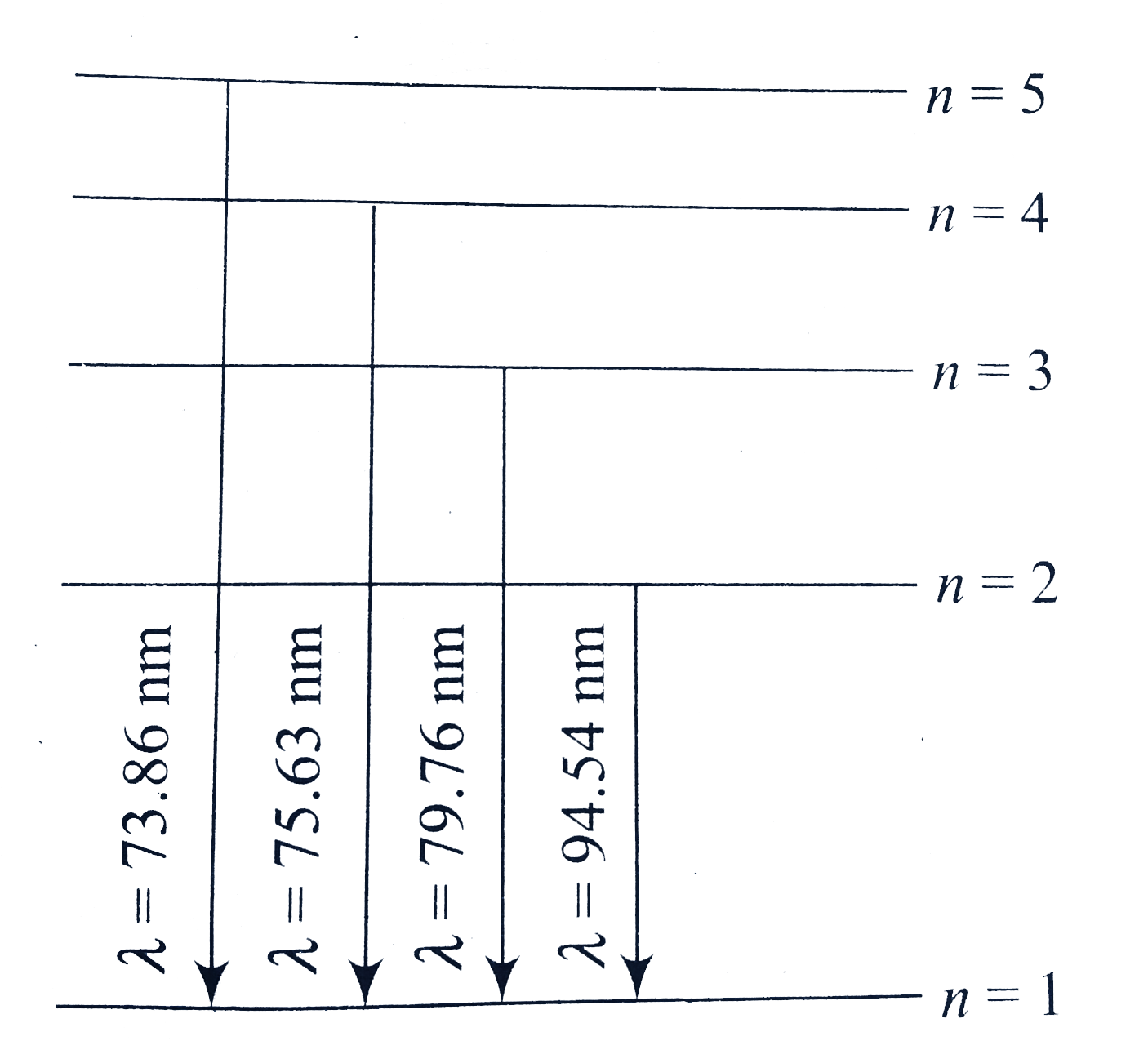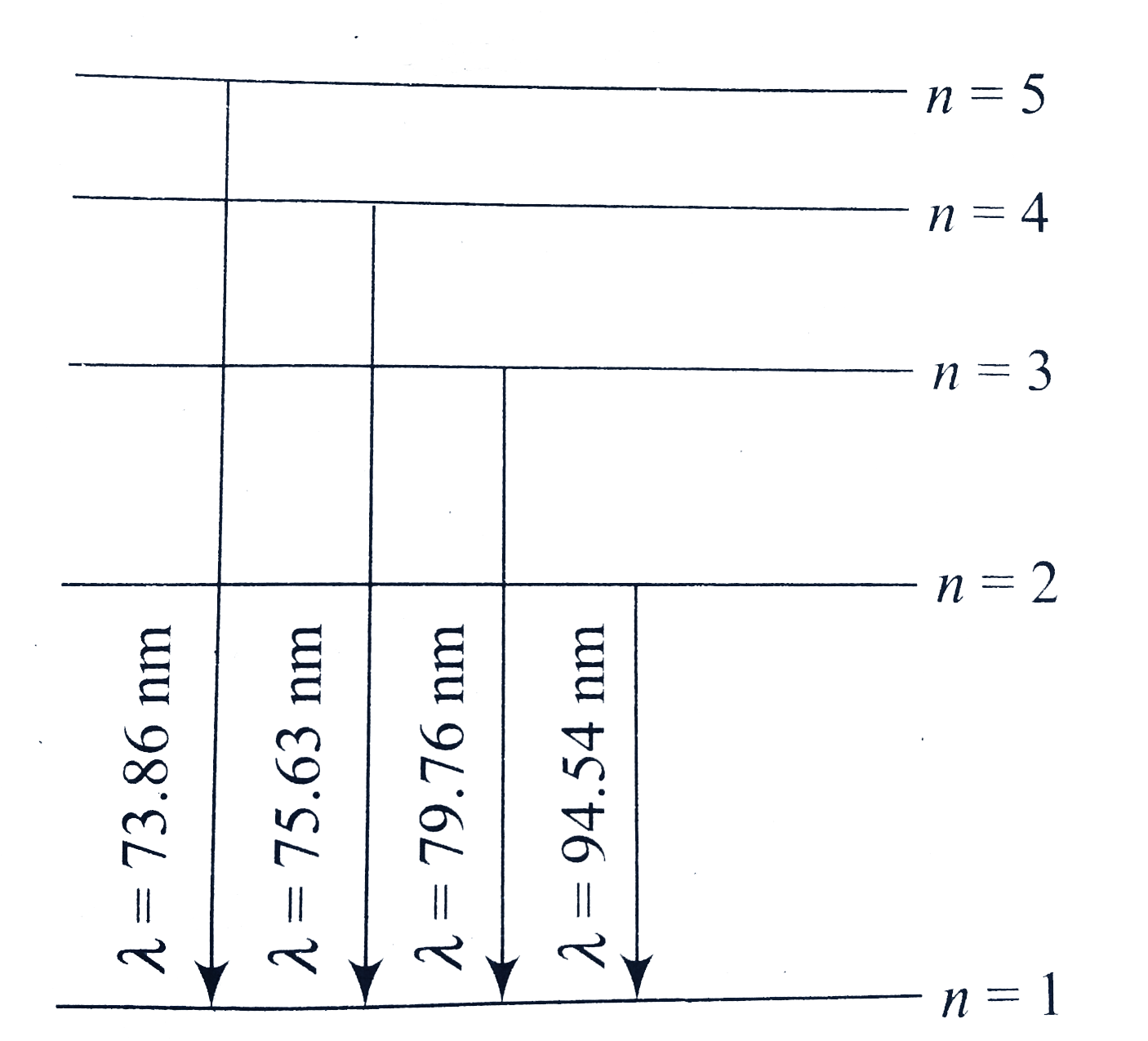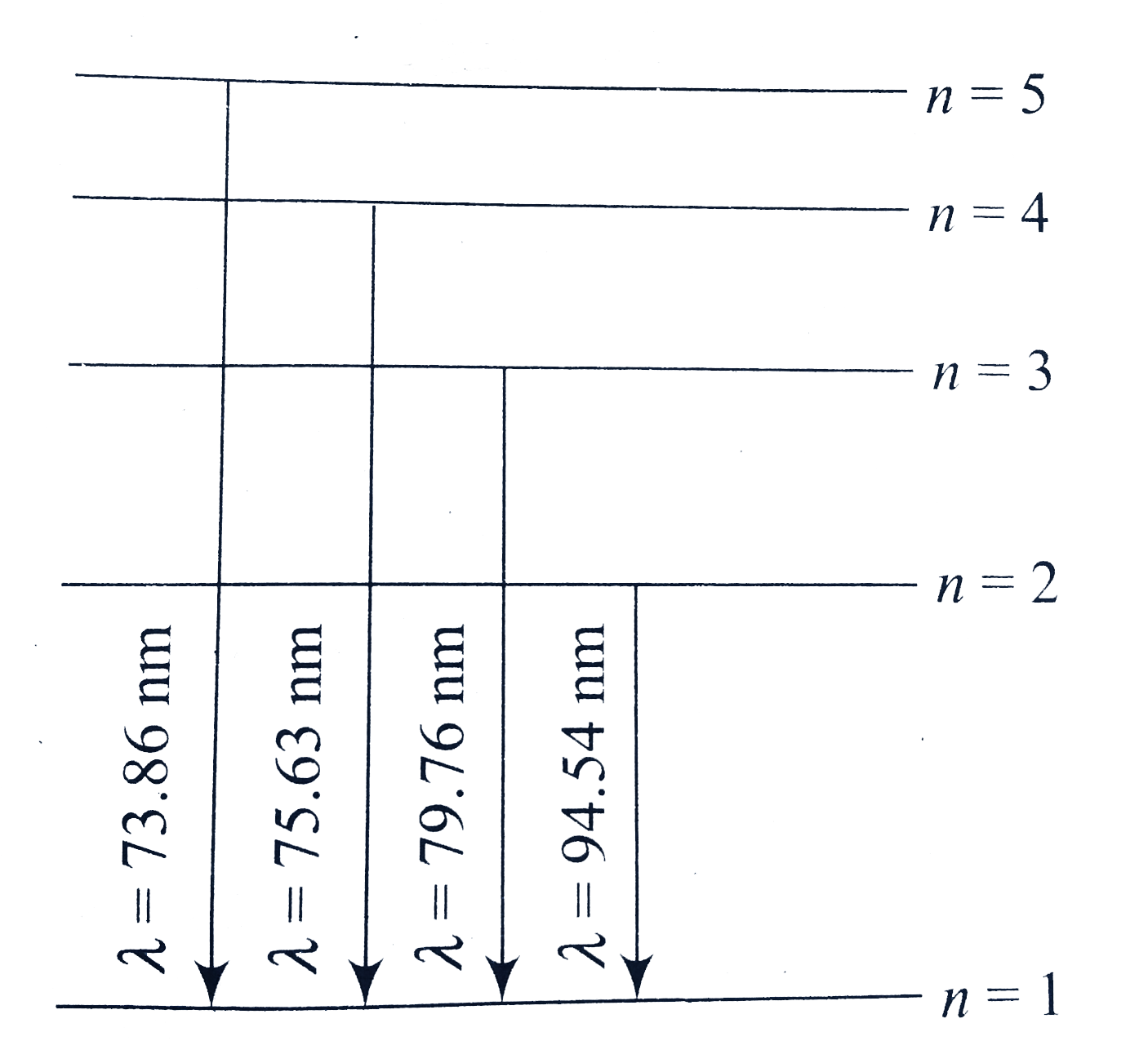In a set of experiment on a hydrogen on a hypothetical one-electron atom, the wavelength of the photons emitted from transition ending in the ground state (n=1) are shown in the energy level diagram

λ5→1=73.86nm
λ4→1=75.63nm
λ3→1=79.76nm
λ2→1=94.54nm
The energy of the atom in level n=1 is nearly
A
13.14eV
B
15.57eV
C
17.52eV
D
16.42eV
Video Solution
Text Solution
The correct Answer is:D
E1=−17.52eV=Z2E01E2−E1=(E122−E1)
hcλ2→1=1242eVnm94.54nm=13.14eV
E3−E1=hcλ3→1=1242eVnm79.76nm=15.57eV
E3=−1.95eV
E4−E1=hcλ4→1=1242eVnm75.63nm=16.42eV
|
Updated on:21/07/2023
Topper's Solved these Questions
- BOOK - CENGAGE PHYSICSCHAPTER - ATOMIC PHYSICSEXERCISE - Integer4videos
ATOMIC PHYSICS
- BOOK - CENGAGE PHYSICSCHAPTER - ATOMIC PHYSICSEXERCISE - Fill In The Blanks8videos
ATOMIC PHYSICS
- BOOK - CENGAGE PHYSICSCHAPTER - ATOMIC PHYSICSEXERCISE - Multiple Correct13videos
ATOMIC PHYSICS
- BOOK - CENGAGE PHYSICSCHAPTER - ALTERNATING CURRENTEXERCISE - QUESTION BANK65videos
ALTERNATING CURRENT
- BOOK - CENGAGE PHYSICSCHAPTER - ATOMSEXERCISE - QUESTION BANK40videos
ATOMS
Similar Questions
Knowledge Check
- Question 1 - Select One
In a set of experiment on a hydrogen on a hypothetical one-electron atom, the wavelength of the photons emitted from transition ending in the ground state (n=1) are shown in the energy level diagram

λ5→1=73.86nm
λ4→1=75.63nm
λ3→1=79.76nm
λ2→1=94.54nm
The possible energy of the atom in n=3 cannot beA−19.5eVB−0.4875eVC−0.121eVD−7.8eV - Question 2 - Select One
In a set of experiment on a hydrogen on a hypothetical one-electron atom, the wavelength of the photons emitted from transition ending in the ground state (n=1) are shown in the energy level diagram

λ5→1=73.86nm
λ4→1=75.63nm
λ3→1=79.76nm
λ2→1=94.54nm
If an electron made a transition from n = 4 to n = 2 level, the wavelength of the light that it would emit is nearlyA380nmB190nmC76nmD510nm - Question 3 - Select One
The wavelengths of photons emitted by electron transition between two similar leveis in H and He+ are λ1 and λ2 respectively. Then :-
Aλ2=λ1Bλ2=2λ1Cλ2=λ1/2Dλ2=λ1/4
The electron in a hydrogen atom at rest makes a transition from n=2 energy state to the n=1 ground state.
find the energy (eV) of the emitted photon.View SolutionThe wavelength of electron waves in two orbits (λ1:λ2)
View SolutionLet K1 be the maximum kinetic energy of photoelectrons emitted by a light of wavelength λ1 and K2 corresponding to λ2). If λ1=2λ2, then
View SolutionThe energy that should be added to an electron to reduce its de-Broglie wavelength from 1 nm to 0.5 nm is
View SolutionEnergy of an emitted photon with wavelength 620nm is :
View Solution

